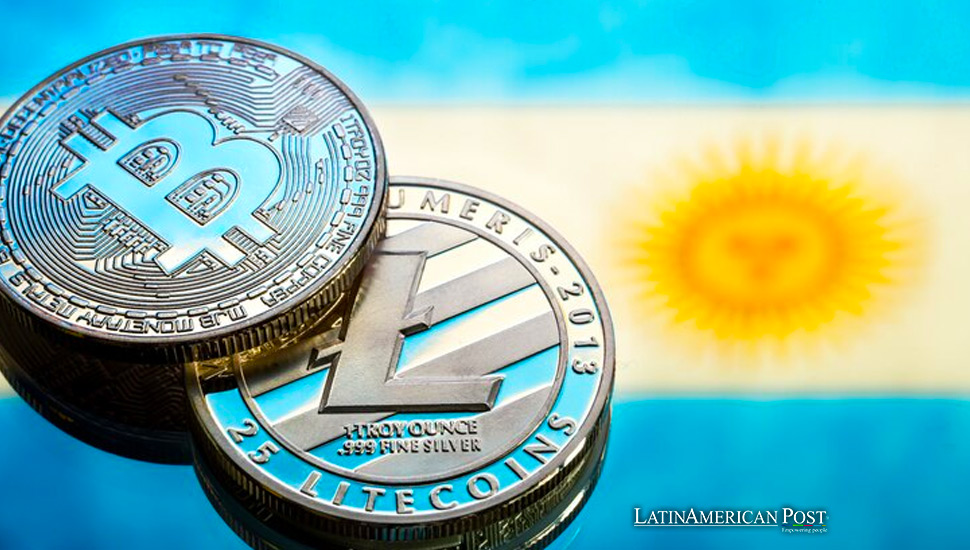These Latin American countries facilitate cryptocurrency adoption to weaken inflation

Global cryptocurrency adoption would mitigate the costs of transaction fees and enhance network security and privacy for the end consumer who struggles with accessing proper financial services. On the other hand, businesses can offer transparency and benefit from increased global reach, reaching new markets. Yet, introducing a new and completely different system from the ones we already use are limited by the lack of technological know-how and regulation constraints.
The crypto industry can offer much more than tokens, even if the ADA USDT price shows us how crypto is moving towards massive adoption. Decentralized apps, non-fungible tokens, and many other similar tools have the capacity to streamline systems and handle security at a higher level than our current methods do.
However, cryptocurrency adoption would most likely help developing countries overcome difficulties. If people have access to financial services, poverty could decrease, while economic growth could be supported. Countries in Central America, like El Salvador, have already started playing with Bitcoin, but South America is closely following. Here are the countries that fight for financial accessibility the most.
Venezuela and its Petro cryptocurrency
Venezuela has been rated as the first Latin American country in the Global Crypto Adoption Index from 2023, a top analysis of the value of centralized services, P2P trading and DeFi value. The high volume of bolivar transactions since 2020 made Venezuela a country with huge potential for crypto adoption, and crypto was used as a way to hedge against inflation.
While Bitcoin wasn’t really a hit, most people would use stablecoins, which are pegged to an official fiat currency, such as the US dollar, and offer much more security and stability on the market. Still, the potential was stripped away by the government.
In 2018, President Nicolas Maduro launched the country’s first digital token, backed by oil reserves, to help the country face the economic crisis. However, the project was recently concluded because experts believed it would lead to hyperinflation.
Brazil and the first Bitcoin ETF in Latin America
Brazil is the second most developed country in terms of readiness for crypto adoption, considering the growing tech industry. The country’s government supports crypto businesses, leading to their expansion on the Brazilian market and setting the tone for future companies. The regulatory advances and institutional adoption are driving massive crypto adoption, which can help Brazil thrive. Hence, the first BTC ETFs approved in Latin America were operated by the Brazilian Securities and Exchange Commission.
The ecosystem led to the emergence of the country’s first stablecoin, MBRL, with the help of Mercado Bitcoin, backed by the Brazilian currency in collaboration with the Stellar distributed ledger platform. The token is planned for release in 2024 to over 200 million citizens. Still, other cryptocurrencies will also be encouraged for use since one of the country’s bills will regulate virtual assets providers.
Argentina and the risks of USD from the black market
Argentina was one of the most heavily challenged countries in terms of financial accessibility because the Argentine peso was hit by double-digit inflation, rising to shocking stats in 2022. The peso devaluation exacerbated Argentina’s reliance on the US dollar, leading to numerous taxes. Therefore, Argentina switched interest to Bitcoin, Ethereum, and stablecoins because they’re more accessible and offer cheaper and faster transactions.
Considering that many citizens face massive risks when buying US dollars from the black market, cryptocurrencies could help mitigate these digital dangers. At the same time, because crypto relies heavily on decentralization, citizens won’t be limited by banks in accessing their accounts or creating new ones.
Now, Argentinians leverage crypto as a store-of-value investment, remittances and DeFi activities. However, many pay for daily purchases and taxes with cryptocurrencies.
Colombia and remittances for adoption
Colombia is a thriving environment in crypto, where the government supports the expansion of blockchain and crypto instruments. That’s why crypto companies contributed to the development of the market, one of which created the peso stablecoin in partnership with Polygon, the innovative blockchain solution.
Colombia’s central bank has also collaborated with Ripple to explore blockchain and introduce it to the general public. Moreover, despite not having clearly set taxing guidelines, Colombia has mitigated tax evasion with the help of the national digital currency.
In 2021, the country also experimented with e-Peso, the digital version of the fiat currency, which attracted more attention from the crypto community due to its potential for investment.
Mexico and its hotspot for cryptocurrency
Lastly, Mexico is one of the Latin American countries that contributed to the development of crypto in the market by passing several laws for regulating these assets. Lately, the Bitcoin Lighting system partnered with a local company, Grupo Salinas, to enhance the coin’s adoption and offer citizens a new way to pay their internet bills through the network.
Tether was also a game-changer for the crypto environment in Mexico because it provided pegged stablecoins to the peso’s currency on blockchains like Ethereum and Polygon, driven by the massive expansion of Bitcoin in the country. This, along with Bitcoin ATMs installed in Mexico’s Senate Building, set the ground for more transparency and trust for citizens.
One of the Mexican Senators proposed that Bitcoin should become legal tender, like in El Salvador because it would have a positive impact on the economy. The Senator also stated that Bitcoin adoption would address inequality and financial inclusion at a higher level, but the project has remained stagnant due to El Salvador’s lack of success in adopting Bitcoin. Although many other countries wanted to follow its example, these economies aren’t prepared to withstand the cryptocurrency’s technical requirements.
Bottom line
The cryptocurrency market is on the rise and has entered various financial environments, like the Latin American one, to bring improvements and technology. Countries like Argentina, Colombia and Mexico have been adopting a few stablecoins for people to address their limited bank access. In contrast, others have implemented their own digital currencies to facilitate transactions and mitigate the rising and overwhelming inflation.




